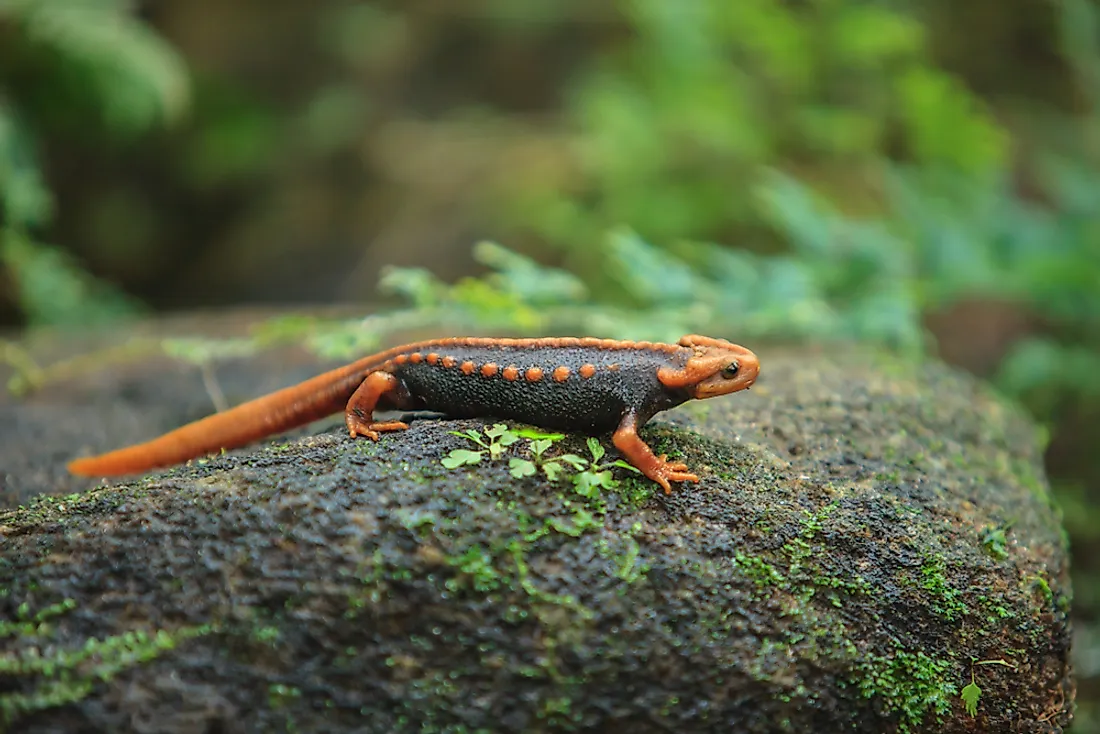Are Salamanders Amphibians?

Salamanders are amphibians which are known for their lizard-like appearance with short limbs, blunt snouts, and slender bodies. The Salamander families belong to the order Urodela. Salamanders are mostly found in the Northern Hemisphere, particularly within the Holarctic ecozones with other species residing in the Neotropical zone. Some salamanders are entirely terrestrial as adults while others are marine animals throughout their lives. Salamanders can regenerate lost legs and any other damaged part of their bodies.
Respiration in Salamanders
Just like most amphibians, the different salamander species breathe through a membrane in their throat and mouth, skin, lungs, and gills. Their larvas respire through the gill with the water coming in through their mouth and exiting through the gills. Other than the mudpuppies which retain their gills, most salamanders lose their gills while undergoing metamorphosis. The lungs vary in structure and size with the cold-water salamanders like the Rhyacotriton variegatus having smaller lungs. The lungless salamanders have no gills or lungs and exchange gas through their skin and mouths. They have a dense blood vessels network in their mouth and under their skin.
Reproduction in Salamanders
Most amphibians lay their eggs in fresh water while others look for a moist place on land. Salamanders lay eggs in ponds, moving waters while others like the lungless species lay their eggs on land in well-hidden places. Fertilization in over 90% of the species on earth is done internally but with most salamanders the male deposit their spermatophores on the ground which the female collect using their vents. The males of other primitive species like the giant salamanders deposit their sperms on the eggs just like the frog.
Diet of Salamanders
Most amphibians like terrestrial salamanders capture their preys by flicking their tongues which have a sticky tip and then draws them into their mouth before grasping them with their jaws. They salamanders have small teeth on their lower and upper jaws. They are opportunistic predators whose diets are not restricted to a specific type of food.
Lifecycle of Salamanders
Most amphibians including salamanders undergo metamorphosis. They usually lay their eggs on water, and their larvae are adapted to living in water and breathe through gills. Some species like the fire salamanders retain their eggs within their bodies until they hatch and then deposit the larvae in water.
What is the Difference Between Salamanders and Lizards?
Even though they resemble lizards, salamanders are amphibians, and they have some unique differences while lizards are reptiles. One of the most visible differences between the two is the fact that lizards have clawed toes and external ears while salamanders do not have these features. Lizards have dry skins covered with scales while salamanders have moist skins.
Salamanders are amphibians while lizards are reptiles. Salamander lays eggs in moist areas or on water while lizards lay eggs in a dry land. Lizards lay their eggs in protective structures like crevice or nests while over 20% of the lizards give birth to a live offspring. Other lizard species like the whiptail lizards are known to reproduce from unfertilized eggs while all salamander species reproduce from fertilized eggs.











